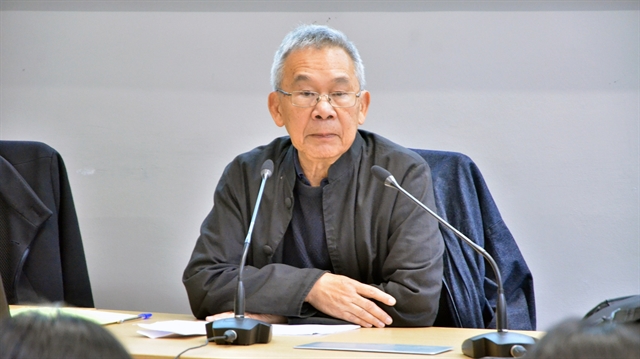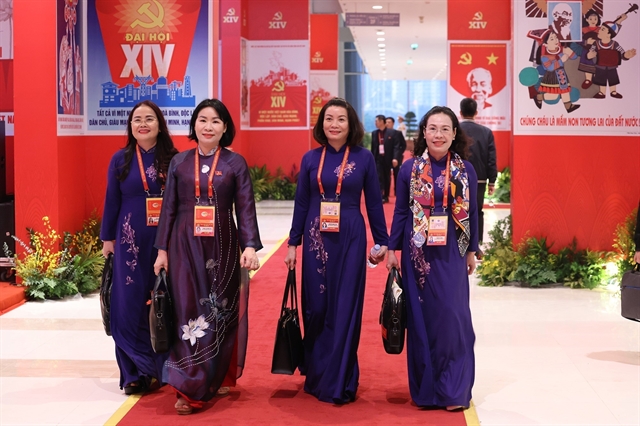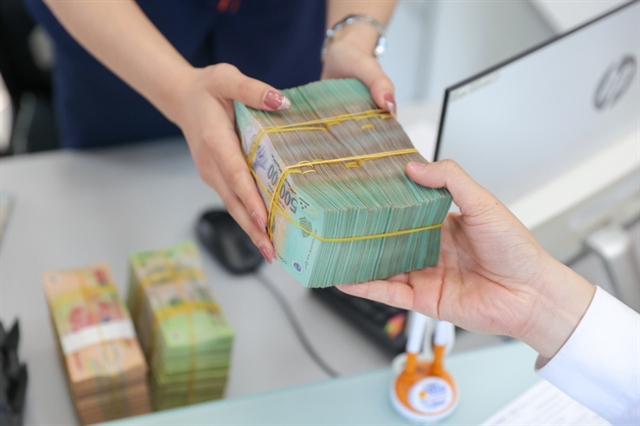 Economy
Economy

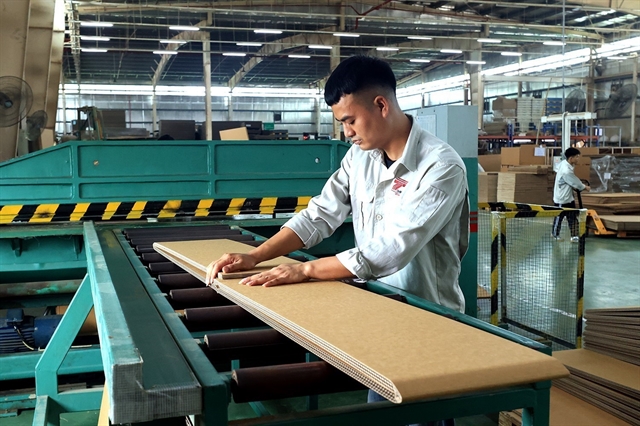 |
| UN-BOXING: A worker at Tri-Wall Vina Pack factory in Hưng Yên Province assembles a paper-based package. Finding alternatives for plastic packages is the measure several packaging manufacturers apply to minimise carbon emissions from plastic production. — VNA/VNS Photo Tuấn Anh |
As Việt Nam strives to achieve carbon neutrality by 2050, reducing carbon emissions from plastic production is one of the key measures needed to achieve this goal.
From a business perspective, practical solutions include reducing, recycling, and finding alternatives to plastic packaging used in goods storage and transport. This requires efforts not only within each business, but also collaboration across sectors, involving both foreign-invested and domestic companies.
At the Vietnam Corporate Sustainability Forum held in Hà Nội last week, representatives from major corporations discussed their efforts to reduce the negative environmental impact of their activities, including changes in packaging design and use.
Vũ Anh Tuấn, senior vice president of CP Vietnam – a food production and processing company – said their primary goal was to reduce the use of plastic packaging when storing and delivering animal feed.
“This is a major objective that we have developed plans for each year,” he said. “We’ve discussed reusing old packaging with our partners and customers, and we’ve also switched to electric vehicles for deliveries. So far, the response has been positive.
“We are also working with packaging companies to source materials that are more environmentally friendly and exploring better methods for treating packaging waste.”
DKHS Vietnam, a Swiss company offering a wide range of market development services, handles a large volume of packaging in its supply chain, distributing products in four categories – consumer goods, healthcare, performance materials, and technology. The company is working to minimise packaging waste, not just by reducing plastic but also paper.
“We are encouraging manufacturers to change their packaging designs,” said Phạm Thị Thùy Vân, DKHS Vietnam’s human resources director. “Our staff have helped some factories reduce the amount of paper used in packaging and adjust package sizes, saving on production and delivery costs.”
The company also collaborates with business clients to implement a circular economy by collecting used packaging, despite the extra costs involved.
“In the beginning, it was a challenge because clients often discarded the boxes or sold them to scrap dealers without considering returning them to us. We’ve supported them by covering the delivery fees,” Vân added.
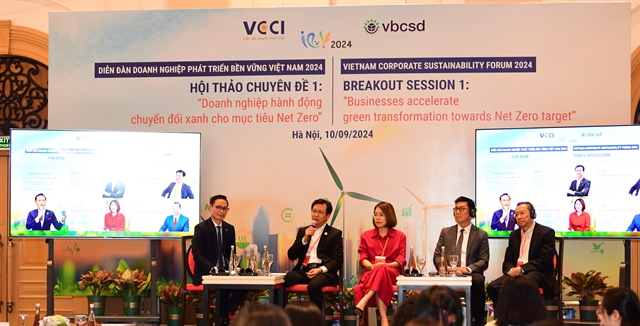 |
| PANEL: From left: Representatives from C.P Vietnam, DKHS Vietnam, SCG Packaging, and SABECO discuss efforts to reduce packaging waste at the Vietnam Corporate Sustainability Forum (VCSF) 2024. — Photo courtesy of VCSF |
Collective efforts
Achieving long-term goals like carbon neutrality requires collaboration and partnerships between businesses, alongside individual efforts.
In 2019, the Packaging Recycling Organization Vietnam (PRO Vietnam) was established by 10 foreign-invested corporations to promote the 3R approach: reduce, reuse, and recycle packaging. The organisation now has 30 members, including leading companies in fast-moving consumer goods (FMCG), packaging, retail, and imports.
The goal is for all members to recycle 100 per cent of their packaging by 2030, turning items like plastic bottles, boxes, and trays into new packaging materials.
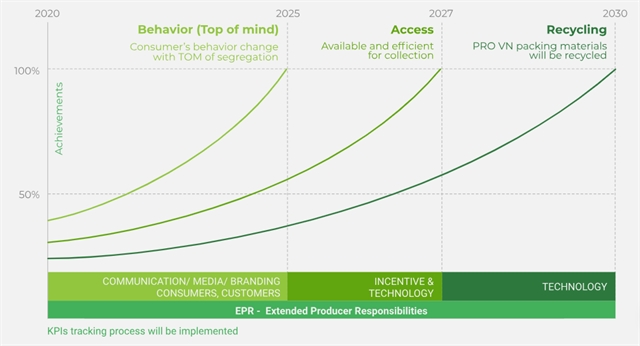 |
| AMBITIOUS PLAN: Packaging Recycling Organization Vietnam (PRO Vietnam)'s roadmap is to have all of its members recycle all their packaging items by 2030. — Photo courtesy of PRO Vietnam |
Nestlé Việt Nam, a PRO member, reduced 2,500 tonnes of plastic packaging between 2021 and 2022 by implementing initiatives to eliminate unnecessary packaging components and replacing plastic with eco-friendly materials.
Heineken Việt Nam, also a PRO member, reused 97 per cent of its glass bottles and 99 per cent of beer kegs last year. The kegs, which last five to 10 years, are recycled when damaged.
From a manufacturer’s perspective, Sompob Witworrasakul, director of SCG Packaging, highlighted the importance of cooperation with FMCG companies to foster sustainable growth.
“Sometimes we are not in direct contact with the end user,” he said at the forum. “The key is to work closely with FMCG companies because they face the packaging requirements directly. When we collaborate, we understand the types of packaging they need.”
SCG Packaging (SCGP), the largest packaging manufacturer in Southeast Asia, operates Vina Kraft Paper (VKPC), one of the biggest packaging paper plants in Việt Nam. SCGP is experimenting with new materials, such as micro-flute cardboard to reduce package weight, and using biodegradable technology like FybroZeal.
Witworrasakul stressed the need to comply with sector-specific regulations. “When we come together with FMCG companies, we realise that producers face more pressure, and we must be prepared for differences in regulations between producers and packaging companies,” he said.
The Extended Producer Responsibility (EPR) policy is one regulation his company is closely monitoring. EPR holds producers accountable for their products' entire lifecycle, including post-consumer stages, according to the Organisation for Economic Cooperation and Development.
In Việt Nam, this approach was outlined in Article 54 of the 2020 Law on Environmental Protection and the Government’s Decree 08 in 2022, which requires producers and importers to pay recycling and disposal fees for discarded products and packaging, starting from January 1, 2024.
Challenges for domestic industry
While foreign-invested businesses’ efforts to reduce plastic packaging are commendable, the question arises of how Vietnamese companies can remain competitive.
A lack of financial resources, technology, and dedicated personnel has forced many Vietnamese packaging manufacturers to sell their companies, according to the Sài Gòn Economic Times.
In 2021, Duy Tân Plastics sold 70 per cent of its shares in packaging and household plastics to SCGP. In 2020, Biên Hòa Packaging was sold to TCG Solutions.
Nguyễn Ngọc Sang, chair of the Việt Nam Packaging Association, acknowledged that despite the packaging industry's consistent growth, challenges remain.
“From 2015 to 2020, the industry grew by an average of 13.4 per cent annually and will continue to expand with Việt Nam’s economic growth, attracting significant foreign investment,” he said.
“However, we need to improve our competitiveness through better management, digital transformation, and by steering the industry in a 'green' direction to meet the requirements of a sustainable economy.” VNS


